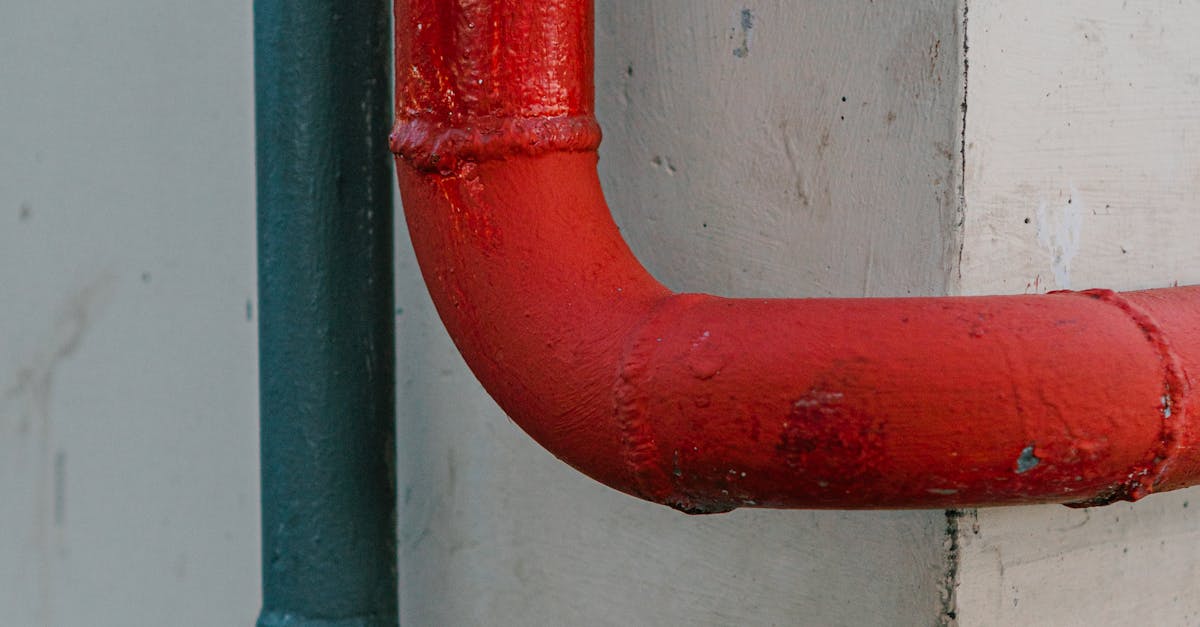
Table Of Contents
Common Causes of Backflow Incidents
Backflow incidents can occur due to a range of causes, posing potential risks to water quality and public health. Common factors leading to backflow include sudden changes in water pressure within plumbing systems, which can result in the reversal of water flow. Additionally, cross-connections between potable water sources and contaminants such as chemicals, pesticides, or sewage can contribute to backflow incidents, compromising the safety of the water supply. Backflow prevention plays a crucial role in mitigating these risks by implementing safeguards to prevent the unwanted reversal of water flow and the contamination of clean water sources. Routine backflow testing and maintenance are essential practices to ensure the effectiveness of backflow prevention devices and uphold the integrity of water supply systems.
CrossConnections in Plumbing Systems
Cross-connections in plumbing systems play a significant role in the occurrence of backflow incidents. These plumbing interconnections between potable water systems and non-potable sources like irrigation systems or chemicals can create a pathway for the unwanted reversal of water flow. Without sufficient backflow prevention measures in place, contaminants such as pesticides, bacteria, and toxic substances can enter the clean water supply, posing serious health risks to consumers. Consequently, ensuring the integrity of plumbing systems and implementing effective backflow prevention mechanisms are crucial to safeguarding water quality.
Identifying and eliminating cross-connections is a fundamental step in preventing backflow incidents. Regular inspections by qualified professionals can help detect any potential breaches in plumbing systems and enable the installation of appropriate backflow prevention devices as necessary. Moreover, educating individuals on the importance of maintaining separate lines for potable and non-potable water sources can contribute to minimising the risks of backflow contamination. By addressing cross-connections proactively and prioritising backflow prevention strategies, communities can uphold the safety and purity of their water supply systems.
Benefits of Regular Backflow Testing
Regular backflow testing is essential for ensuring the ongoing safety and quality of water supply systems. By conducting routine tests, potential issues with backflow prevention devices can be identified and rectified promptly. This proactive approach helps to mitigate the risk of contaminants entering the water supply through backflow incidents, safeguarding the health and wellbeing of consumers. Furthermore, regular testing assists in maintaining compliance with regulatory standards and requirements, providing peace of mind for both property owners and regulatory authorities regarding the integrity of the water supply system.
Backflow prevention through regular testing also promotes the longevity and effectiveness of backflow prevention devices. Detecting any malfunctions or deficiencies early on allows for timely repairs or replacements, preventing major failures that could compromise the entire system. Additionally, investing in regular testing can result in cost savings in the long run by avoiding extensive damage and costly repairs that may arise from backflow incidents. Overall, the commitment to regular backflow testing demonstrates a dedication to prioritising public health and safety through proactive maintenance and risk management strategies.
Ensuring Water Supply Safety
Ensuring water supply safety is a critical aspect in the maintenance of a functional plumbing system. Backflow prevention plays a vital role in safeguarding the purity of potable water. By implementing backflow prevention devices, the risk of contaminants entering the water supply system is significantly reduced. This is imperative in preventing potential health hazards that could arise from contaminated water sources.
Moreover, adherence to strict backflow prevention measures not only ensures the safety of the water supply but also promotes compliance with regulatory standards. Regular testing and maintenance of backflow prevention devices are essential to verify their effectiveness, thereby upholding the integrity of the water distribution network. By prioritising water supply safety through comprehensive backflow prevention strategies, both residential and commercial properties can contribute to the overall well-being of the community.
Residential vs. Commercial Backflow Prevention Strategies
Residential and commercial properties differ in their backflow prevention strategies due to distinct requirements and complexities. In residential settings, backflow prevention typically involves installing simple, cost-effective devices such as backflow prevention valves on taps and water outlets. These devices serve to safeguard against backflow incidents caused by water pressure drops or cross-connections within the plumbing system. Regular maintenance and testing of these devices are essential to ensure their continued functionality and effectiveness in preventing water contamination.
On the other hand, commercial backflow prevention strategies often entail more comprehensive and sophisticated measures to address the higher risks associated with complex plumbing systems and larger water usage. In commercial settings, backflow prevention may involve the installation of advanced backflow prevention assemblies that are designed to handle higher water volumes and pressures. Additionally, businesses are required to adhere to stricter regulations and standards regarding backflow prevention to maintain the safety and quality of the water supply. Regular backflow testing and certification are crucial components of commercial backflow prevention to mitigate the risks of water contamination and ensure compliance with regulatory requirements.
Tailored Approaches for Different Settings
Tailored approaches for backflow prevention vary depending on the setting in which they are implemented. For residential settings, it is crucial to focus on educating homeowners about the importance of backflow prevention and the potential risks associated with backflow incidents. This can involve installing appropriate backflow prevention devices at key points in the plumbing system, such as at the water meter or where irrigation systems connect to the main water supply.
On the other hand, commercial settings require a more comprehensive approach to backflow prevention. This can include regular testing and maintenance of backflow prevention devices to ensure they are functioning correctly. Additionally, businesses need to implement strict protocols for handling chemicals and other substances that could contaminate the water supply if backflow occurs. By tailoring backflow prevention strategies to different settings, it is possible to minimise the risk of backflow incidents and protect the safety of the water supply for all users.
FAQS
Why is backflow prevention important in plumbing systems?
Backflow prevention is important in plumbing systems to prevent contamination of the potable water supply by ensuring that water flows in one direction only and does not mix with non-potable water sources.
What are the common causes of backflow incidents?
Common causes of backflow incidents include backpressure backflow, back-siphonage, cross-connections between potable and non-potable water sources, and changes in water pressure.
How does backflow prevention contribute to ensuring water supply safety?
Backflow prevention contributes to ensuring water supply safety by maintaining the quality and purity of the potable water supply, minimizing the risk of contamination from external sources.
What are the benefits of regular backflow testing?
Regular backflow testing helps to identify and address any potential issues with backflow prevention devices, ensuring they are functioning correctly and effectively protecting the water supply from contamination.
Are there different backflow prevention strategies for residential and commercial settings?
Yes, there are different backflow prevention strategies for residential and commercial settings due to the varying complexities of plumbing systems and potential sources of contamination. It is important to tailor backflow prevention measures according to the specific needs of each setting.


